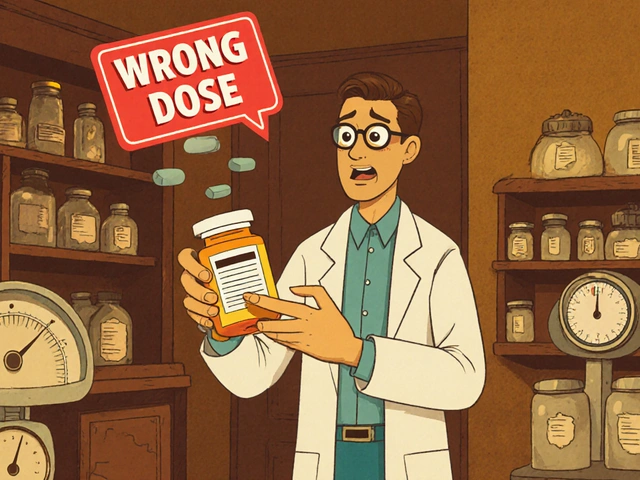Dipyridamole isn’t a drug you hear about every day, but if you’ve had a heart attack, stroke, or been told you’re at risk for blood clots, you’ve probably been prescribed it. It doesn’t make headlines like blood thinners such as warfarin or apixaban, but for millions of people, especially in the UK and Europe, it’s a quiet guardian against clotting. Unlike newer anticoagulants, dipyridamole has been around since the 1960s. It’s cheap, effective, and often used in combination with aspirin - a pairing that’s stood the test of time in clinical practice.
What dipyridamole actually does in your body
Dipyridamole works by stopping platelets - the tiny blood cells that stick together to form clots - from getting too active. It does this in two ways. First, it blocks an enzyme called phosphodiesterase, which lets more of a natural chemical called cyclic AMP build up inside platelets. Higher levels of cyclic AMP tell platelets to calm down. Second, it boosts the amount of adenosine in your blood. Adenosine is a natural substance that relaxes blood vessels and also makes platelets less likely to clump.
This dual action makes dipyridamole different from aspirin, which only blocks one pathway of platelet activation. That’s why doctors often combine the two. When taken together, they cover more ground than either drug alone. This combo is especially common after a stroke caused by a blood clot, or after certain heart procedures like valve replacements.
Who gets prescribed dipyridamole?
The main uses are clear-cut. The UK’s National Institute for Health and Care Excellence (NICE) recommends dipyridamole with aspirin for people who’ve had a transient ischemic attack (TIA) or minor stroke due to a blood clot. It’s also used after mechanical heart valve surgery to prevent clots from forming on the valve surface. In some cases, it’s used off-label for patients who can’t tolerate other antiplatelet drugs.
It’s not used for every type of stroke. If the stroke was caused by bleeding in the brain, dipyridamole would be dangerous. Doctors always check the cause first. That’s why imaging like CT or MRI scans come before prescribing it.
In the UK, the brand name Persantin is still sold, but most prescriptions are for generic dipyridamole. It’s available as tablets - usually 75mg or 200mg - and sometimes as an injectable form used in stress tests to check heart function. The injectable version isn’t for daily use; it’s only given in hospitals under supervision.
How it’s taken - dosage and timing
For stroke prevention, the standard dose is 75mg taken four times a day, usually with meals to reduce stomach upset. Many people find this hard to stick to, so doctors often switch them to a modified-release version: 200mg twice a day. That’s easier to remember and just as effective.
When paired with aspirin, the usual combo is 75mg aspirin once daily plus 200mg dipyridamole twice daily. This combination is sold as Aggrenox in the US, but in the UK, you’ll get the two drugs separately. The combination reduces the risk of another stroke by about 20% compared to aspirin alone, according to data from the European Stroke Prevention Study.
Timing matters. Taking dipyridamole with food helps with absorption and cuts down on nausea. Don’t crush or split extended-release tablets - they’re designed to release slowly. If you miss a dose, take it as soon as you remember, but skip it if it’s almost time for the next one. Never double up.

Side effects you should know about
Most people tolerate dipyridamole well. But it’s not without downsides. The most common side effects are headaches, dizziness, and stomach upset. Headaches are so common that they’re practically a sign the drug is working - they happen because dipyridamole widens blood vessels in the brain. They usually fade after a few days as your body adjusts.
Some people feel lightheaded or get a fast heartbeat. That’s because dipyridamole can lower blood pressure slightly. If you’re already on blood pressure meds, your doctor will monitor you closely. In rare cases, it can cause chest pain or worsen angina, especially if you have severe heart disease. That’s why it’s not used in people with unstable angina or recent heart attacks.
More serious but rare side effects include allergic reactions - rash, swelling, trouble breathing - and low blood cell counts. If you notice unexplained bruising, bleeding gums, or extreme fatigue, get checked. These are signs your bone marrow might be affected.
What you can’t mix with dipyridamole
Some drugs interfere with how dipyridamole works. Caffeine is a big one. Coffee, tea, energy drinks, and even chocolate can block dipyridamole’s effect. That’s why you’re often told to avoid caffeine for at least 12 hours before a dipyridamole stress test - the caffeine would make the test useless.
Other drugs to watch out for include theophylline (used for asthma), certain antibiotics like ciprofloxacin, and antifungals like fluconazole. These can raise dipyridamole levels in your blood and increase side effects. Always tell your pharmacist or doctor about everything you’re taking - even over-the-counter supplements.
Don’t take dipyridamole if you’re allergic to it or if you have severe low blood pressure. It’s also not recommended during pregnancy unless absolutely necessary. There’s limited data on its safety in breastfeeding, so talk to your doctor if you’re nursing.

Why dipyridamole still matters today
With so many new blood thinners on the market, you might wonder why dipyridamole is still around. The answer is simple: it works, it’s cheap, and it’s been proven over decades. A 2023 review in the British Medical Journal found that the dipyridamole-aspirin combo remains one of the most cost-effective stroke prevention strategies in the NHS. It costs less than £10 a month, while newer drugs like dabigatran can cost over £50.
It’s not for everyone. But for people with non-cardioembolic strokes - the kind caused by narrow arteries in the neck or brain - it’s a top choice. It doesn’t require regular blood tests like warfarin. It doesn’t carry the same bleeding risks as newer anticoagulants in older adults. And for many, it’s the right balance of safety and effectiveness.
What to do if you’re on dipyridamole
If you’re taking it, keep a list of your medications and share it at every doctor’s visit. Don’t stop suddenly - stopping dipyridamole can increase your risk of clotting in the days after you quit. If you need surgery or a dental procedure, tell your surgeon or dentist you’re on it. They might ask you to pause it briefly, but never do this without their advice.
Watch for signs of bleeding: nosebleeds that won’t stop, blood in urine or stool, unusual bruising. If you fall and hit your head, even if you feel fine, get checked. Dipyridamole makes you more prone to internal bleeding.
Keep your follow-up appointments. Your doctor will check your blood pressure and may order blood tests to make sure your liver and kidneys are handling the drug well. Most people don’t need frequent monitoring, but it’s part of safe long-term use.
Alternatives to dipyridamole
If dipyridamole doesn’t suit you - maybe because of side effects or interactions - there are other options. Aspirin alone is the most common substitute. Clopidogrel is another antiplatelet drug that’s often used after strokes or in people who can’t take aspirin. For those with atrial fibrillation or heart valve issues, direct oral anticoagulants (DOACs) like rivaroxaban or apixaban might be better.
But remember: these aren’t interchangeable. Each drug has its own risks, costs, and monitoring needs. Switching without medical advice can be dangerous. Your doctor chooses based on your stroke type, age, kidney function, and other health conditions.






